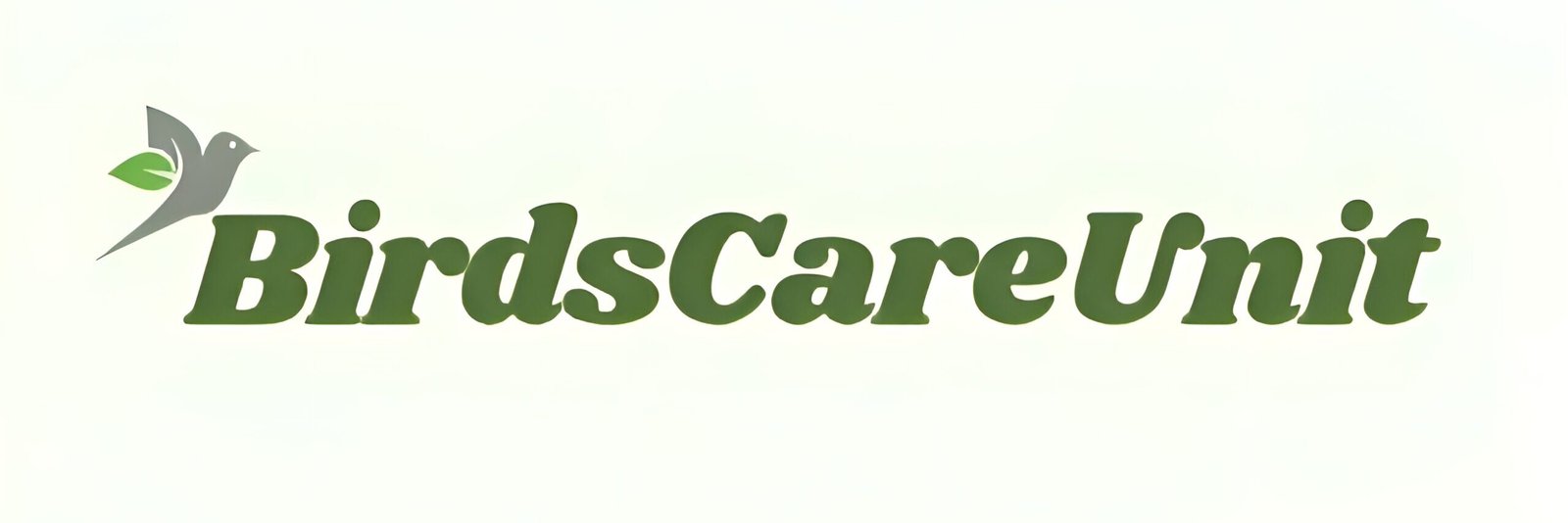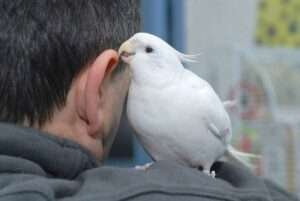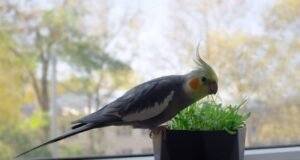Cockatiel Free-Flying Indoors: Tips for Safety and Training

As a long-time breeder of pet birds, I’ve learned that while cockatiels thrive in cages, they are not fully satisfied being confined all the time. Like all birds, they have a natural desire to fly. However, allowing my cockatiels to fly outside on my rooftop is risky due to the presence of neighborhood cats, dogs, and predatory birds. This led me to explore a safer alternative: indoor flying. Flying is essential for cockatiels’ exercise, contributing to their immune system and digestion. Although they have access to all the necessary food and minerals in their cage, exercise is equally important for their overall health. To ensure my birds get the activity they need, I’ve trained my tamed cockatiels to fly safely indoors. In this comprehensive guide, I’ll walk you through everything you need to know about indoor free-flying for cockatiels, including how to create a safe environment, training tips, and ensuring their well-being.
Why Free-Flying is Important for Cockatiels
Free-flying indoors provides a variety of benefits for cockatiels, including:
Physical Exercise
Cockatiels need regular physical activity to stay healthy. Flying allows them to stretch their wings and muscles, preventing obesity and related health issues.
Mental Stimulation
Flying indoors engages your cockatiel mentally, preventing boredom. Birds that don’t get enough stimulation can become bored or stressed, leading to destructive behaviors such as feather plucking.
Natural Behavior
Cockatiels are naturally active and curious birds. Free-flying mimics their behavior in the wild, where they fly freely and explore their surroundings.
However, free-flying inside your home comes with its challenges, and it’s essential to make sure your home is safe for your feathered friend. Let’s take a look at how you can bird-proof your home before allowing your cockatiel to take flight.
Creating a Safe Environment for Indoor Free-Flying
Ensuring your cockatiel’s safety is the first step in allowing them to free-fly indoors. Cockatiels can easily get injured by flying into hazards, so it’s important to thoroughly bird-proof your home before starting.
Bird-Proofing Your Home
Windows and Mirrors: Birds can’t recognize glass and may accidentally fly into windows or mirrors, causing serious injury. To prevent this, cover windows with sheer curtains or use decals to make the glass more visible to your bird. Place removable decals or stickers on mirrors to make them less reflective and reduce the risk of accidents.
Ceiling Fans and Open Flames: Always turn off ceiling fans when your cockatiel is out of its cage. A spinning fan can be extremely dangerous for a flying bird. Additionally, keep your bird far away from any open flames, such as candles, stovetops, or fireplaces, as they pose a serious burn risk.
Electrical Cords and Small Objects: Secure or cover any electrical cords, as birds may chew on them, which can be deadly. Also, make sure to remove any small objects that your bird could swallow, as these could lead to choking or digestive blockages.
Toxic Plants and Fumes: Many common household plants, such as poinsettias and lilies, are toxic to birds. Ensure that your home is free from these plants and any other toxic substances. Also, avoid using aerosols, air fresheners, or any other strong-smelling chemicals, as birds have sensitive respiratory systems.
Designating a Safe Flying Space
If possible, designate a specific room in your home as a safe flying area. This will help reduce the risks of your cockatiel encountering hazardous objects and make the environment more controlled for training and flying.
Bird Room: Choose a room where potential dangers can be minimized. It should be free from pets like cats or dogs, which may pose a threat to your cockatiel. Ensure the room is free from sharp objects or small spaces where your bird could get stuck.
Perches and Landing Spots: Provide several perches and safe landing spots around the room. This will encourage your cockatiel to fly around and land safely, reducing the risk of injury. Consider placing perches at various heights and locations so your bird has multiple options.
Once you have ensured that your home is safe, you can begin training your cockatiel for indoor free-flying. Training helps your bird understand boundaries and ensures they listen to your commands, which will make free-flying a smoother and safer experience.
Training Your Cockatiel for Free-Flying
Training your cockatiel to free-fly indoors is essential for both their safety and your peace of mind. It’s important to take a gradual approach, starting with basic trust-building exercises and slowly advancing to recall training.
Building Trust and Bonding
The first step in training is building a strong bond with your cockatiel. Birds that trust their owners are more likely to respond to commands and stay close while free-flying.
Initial Bonding: Spend time with your cockatiel every day to build a strong relationship. Talk softly to them, hand-feed them treats, and handle them gently. This helps your bird feel secure and comfortable around you, which is essential for training.
Basic Commands: Start by teaching your cockatiel basic commands like “step up” and “step down.” These commands are foundational and will help with more advanced training. Use positive reinforcement by offering treats and praise when your bird responds correctly.
Recall Training
Recall training is the process of teaching your bird to fly back to you when called. This is a vital skill that will help you control your bird’s movements during free-flying sessions.
Start Small: Begin recall training in a small, enclosed space like a bedroom or bathroom. Use a treat or favorite toy to encourage your cockatiel to fly from a perch to you. Hold the treat in your hand and call your bird using a consistent verbal cue like “come here.”
Consistent Cues: Always use the same verbal cue and hand signal when calling your bird. For example, extend your arm while saying “come here.” Over time, your cockatiel will associate the cue with flying to you.
Gradual Distance Increase: As your bird becomes more comfortable with flying to you, gradually increase the distance between you and your bird. Start with short distances and slowly extend them over time, always rewarding your bird with treats and praise when they successfully respond to your cue.
Positive Reinforcement
Positive reinforcement is key to successful training. Birds respond best to rewards, so it’s important to offer treats, praise, and affection when they perform a desired behavior.
Rewards: Always have your bird’s favorite treats on hand during training sessions. You can also use verbal praise or gentle petting as a reward. The more your bird associates flying and responding to commands with positive experiences, the more motivated they will be to listen.
Patience: Training takes time and patience. Avoid getting frustrated if your bird doesn’t catch on right away. It’s important to remain calm and patient, as scolding or punishing your bird can create fear and set back the training process.
Monitoring Health and Behavior
Regular health monitoring is crucial for any bird, but it’s especially important for cockatiels that free-fly indoors. Flying provides excellent exercise, but you’ll need to ensure your bird remains in good health and is not stressed or injured.
Regular Check-Ups
Veterinary Visits: Schedule regular check-ups with an avian veterinarian to ensure your cockatiel is in good health. Routine visits can catch potential health issues early and give you peace of mind that your bird is fit for flying.
Observation: Pay attention to your cockatiel’s daily behavior. Changes in eating habits, feather condition, or activity levels can be signs of stress or illness. If you notice any unusual behavior, consult a vet.
Mental Stimulation
In addition to physical exercise, cockatiels need plenty of mental stimulation to stay happy and healthy. Providing toys and interactive activities will keep your bird entertained and prevent boredom.
Toys and Enrichment: Offer a variety of toys that challenge your cockatiel both physically and mentally. Foraging toys, puzzles, and climbing structures are great ways to engage your bird’s mind. Rotate toys regularly to keep things interesting.
Social Interaction: Cockatiels are highly social birds and thrive on interaction with their owners. Make sure you spend time with your bird every day, offering plenty of attention, talking, and playtime. This will prevent your bird from feeling lonely or isolated.
Conclusion
Allowing your cockatiel to free-fly indoors can significantly enrich their life, providing both physical exercise and mental stimulation. However, it requires careful planning and consistent training to ensure your bird’s safety. By bird-proofing your home, creating a designated flying space, and following a structured training plan, you can create a safe and enjoyable environment for your cockatiel to explore.
Remember that patience is key during the training process, and always use positive reinforcement to encourage good behavior. Regular health monitoring and providing plenty of mental stimulation will ensure your cockatiel remains happy and healthy as they enjoy the freedom of indoor flight.
With the right approach, free-flying can become a fun and rewarding experience for both you and your cockatiel. By taking the time to train and prepare, you’re giving your bird the best possible opportunity to thrive in their environment, all while keeping them safe from harm.



